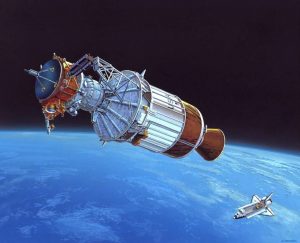- This topic is empty.
-
AuthorPosts
-
12/05/2025 at 15:25 #4782
In an era marked by rapid urbanization, climate change, and technological advancements, the quest for the most efficient human transportation methods has never been more critical. As cities expand and populations grow, the need for sustainable, cost-effective, and time-efficient transportation solutions is paramount. This post delves into various modes of transportation, evaluating their efficiency based on several key criteria: energy consumption, time efficiency, environmental impact, and adaptability to urban landscapes.
1. Defining Efficiency in Transportation
Before we explore specific transportation methods, it is essential to define what we mean by efficiency. In the context of human transportation, efficiency can be assessed through:
– Energy Consumption: The amount of energy required to transport a person over a specific distance.
– Time Efficiency: The time taken to complete a journey, factoring in delays and congestion.
– Environmental Impact: The carbon footprint and ecological effects of a transportation method.
– Cost-Effectiveness: The financial implications for both individuals and society at large.2. Current Modes of Transportation
2.1 Public Transit Systems
Public transportation, including buses, subways, and trams, remains one of the most efficient ways to move large numbers of people.
– Energy Consumption: Public transit systems typically consume less energy per passenger mile compared to private vehicles. For instance, buses can carry dozens of passengers, significantly reducing the energy footprint per individual.
– Environmental Impact: Many cities are transitioning to electric or hybrid public transit options, further decreasing emissions.
– Time Efficiency: While public transit can be subject to delays, dedicated bus lanes and subway systems can offer faster travel times in congested urban areas.2.2 Bicycles and E-Bikes
Bicycles, including electric bikes (e-bikes), are gaining traction as efficient transportation alternatives.
– Energy Consumption: Bicycles are incredibly energy-efficient, requiring minimal energy input for short to medium distances. E-bikes enhance this efficiency by providing pedal assistance, making longer commutes feasible.
– Environmental Impact: Bicycles produce zero emissions, making them an environmentally friendly choice.
– Adaptability: Bicycles can navigate through traffic and utilize bike lanes, often resulting in shorter travel times in congested areas.2.3 Carpooling and Ridesharing
Carpooling and ridesharing services like Uber and Lyft have transformed personal transportation.
– Energy Consumption: By sharing rides, the energy consumption per passenger can be significantly reduced compared to single-occupancy vehicles.
– Time Efficiency: Ridesharing can offer convenience and time savings, particularly in areas with limited public transit options.
– Environmental Impact: While still reliant on fossil fuels, ridesharing can reduce the number of vehicles on the road, potentially lowering overall emissions.3. Emerging Technologies in Transportation
3.1 Autonomous Vehicles
The advent of autonomous vehicles (AVs) promises to revolutionize human transportation.
– Energy Consumption: AVs can optimize driving patterns, potentially reducing energy consumption. Electric AVs could further enhance this efficiency.
– Time Efficiency: With the ability to communicate with traffic systems, AVs could minimize delays and improve traffic flow.
– Environmental Impact: If powered by renewable energy, AVs could significantly reduce the carbon footprint of personal transportation.3.2 Hyperloop and High-Speed Rail
Innovative transportation systems like the Hyperloop and high-speed rail networks are on the horizon.
– Energy Consumption: These systems are designed to be energy-efficient, utilizing magnetic levitation and other advanced technologies.
– Time Efficiency: High-speed rail can drastically reduce travel times between cities, making it a viable alternative to air travel for medium distances.
– Environmental Impact: Both systems aim to minimize emissions, particularly if powered by renewable energy sources.4. Conclusion: The Path Forward
Determining the most efficient human transportation method is not a one-size-fits-all solution. It requires a multifaceted approach that considers the unique needs of urban environments, the available infrastructure, and the technological advancements on the horizon.
-
AuthorPosts
- You must be logged in to reply to this topic.


